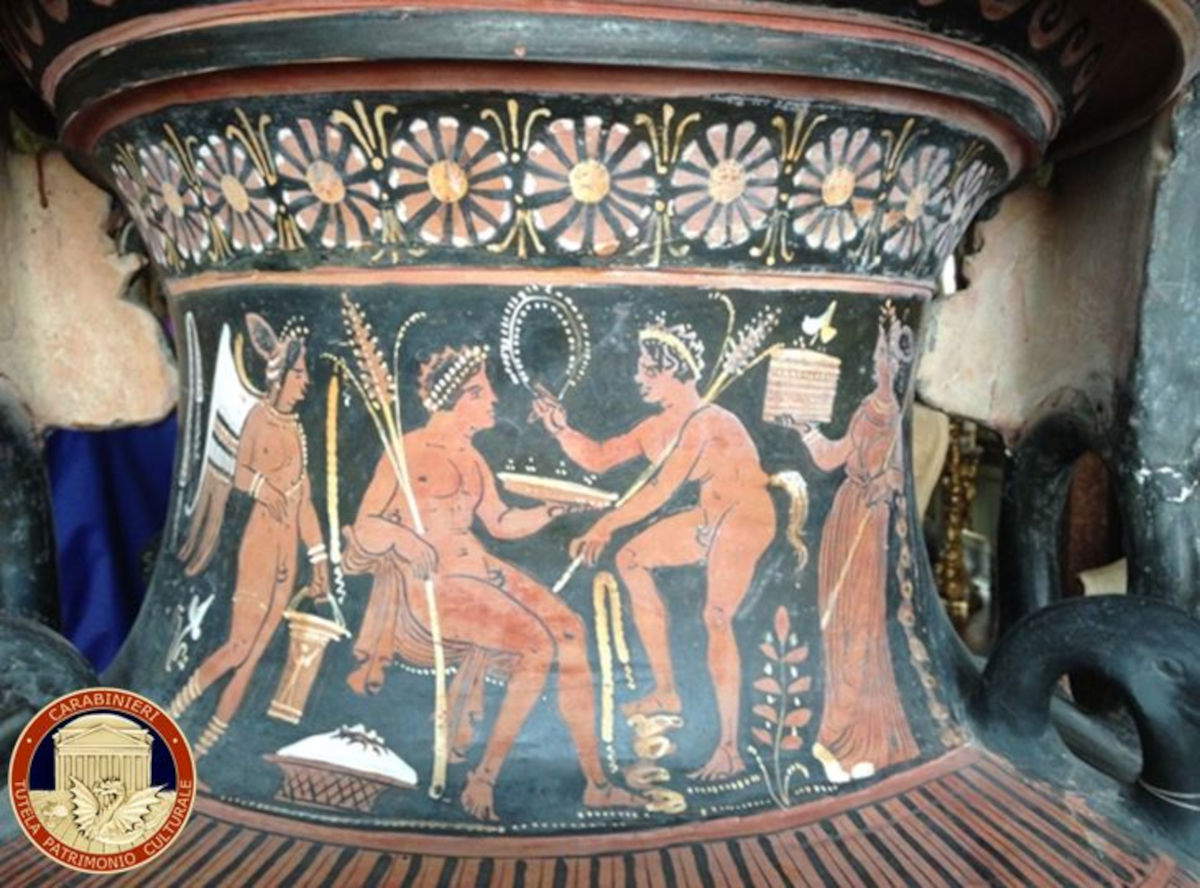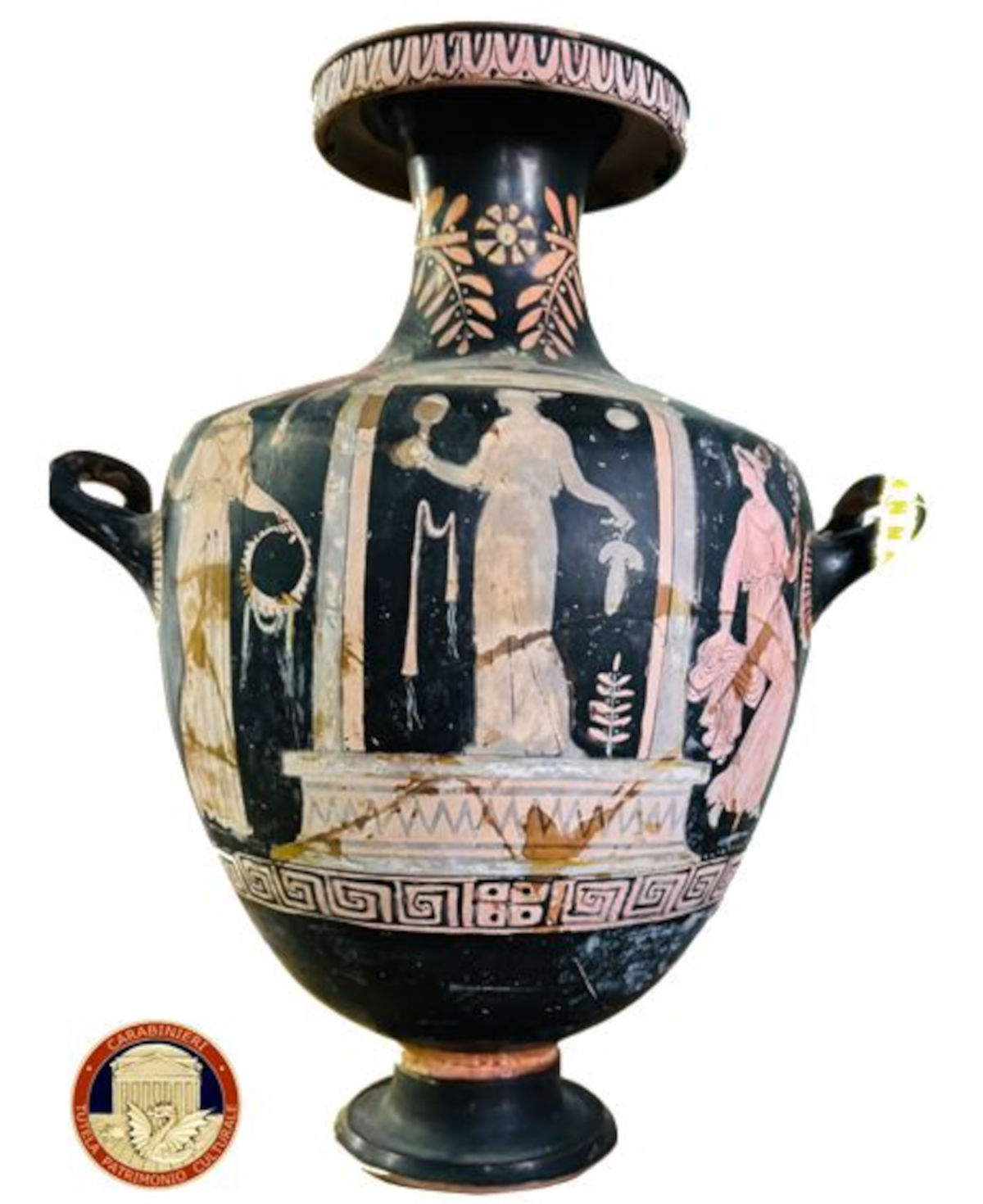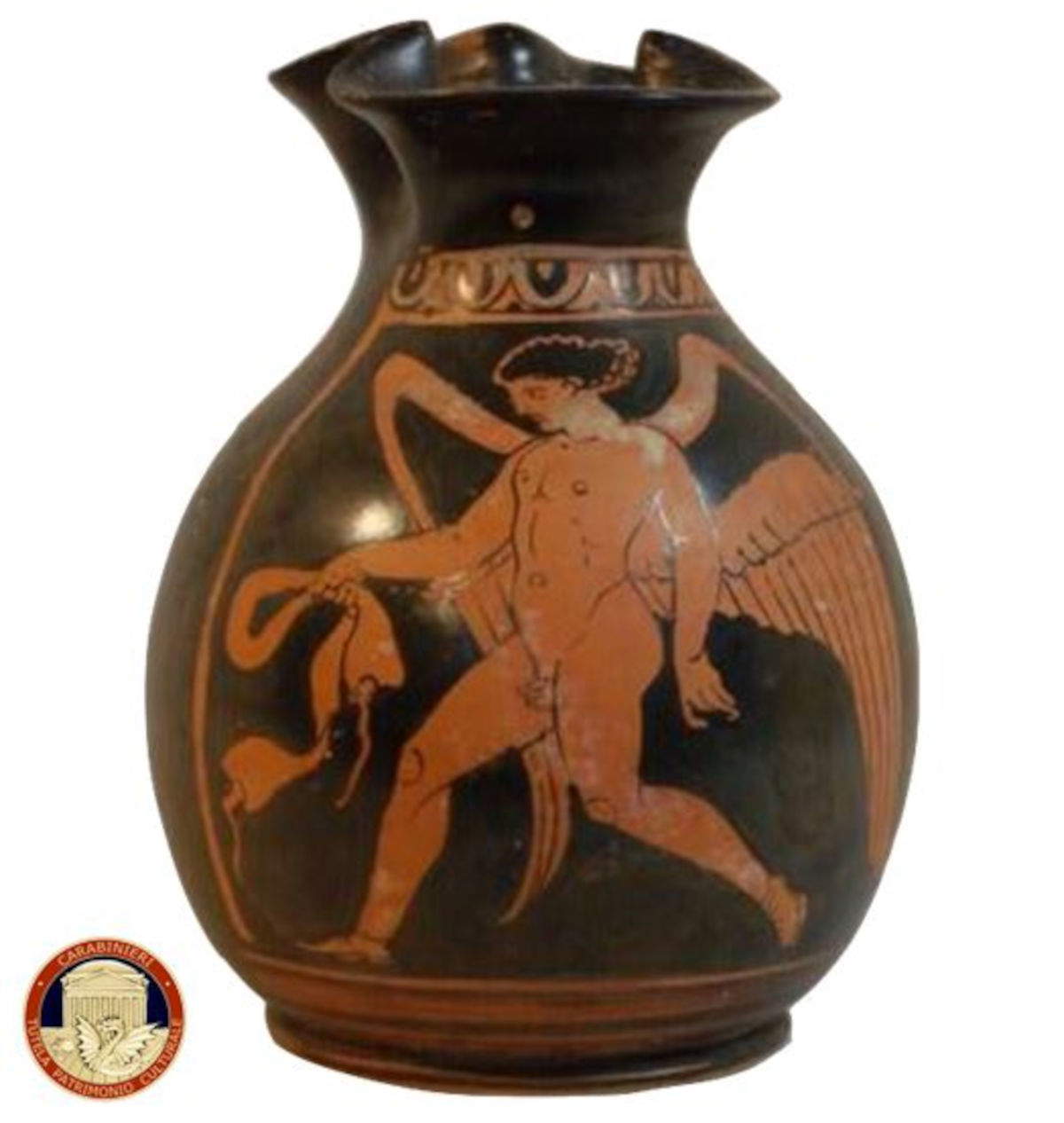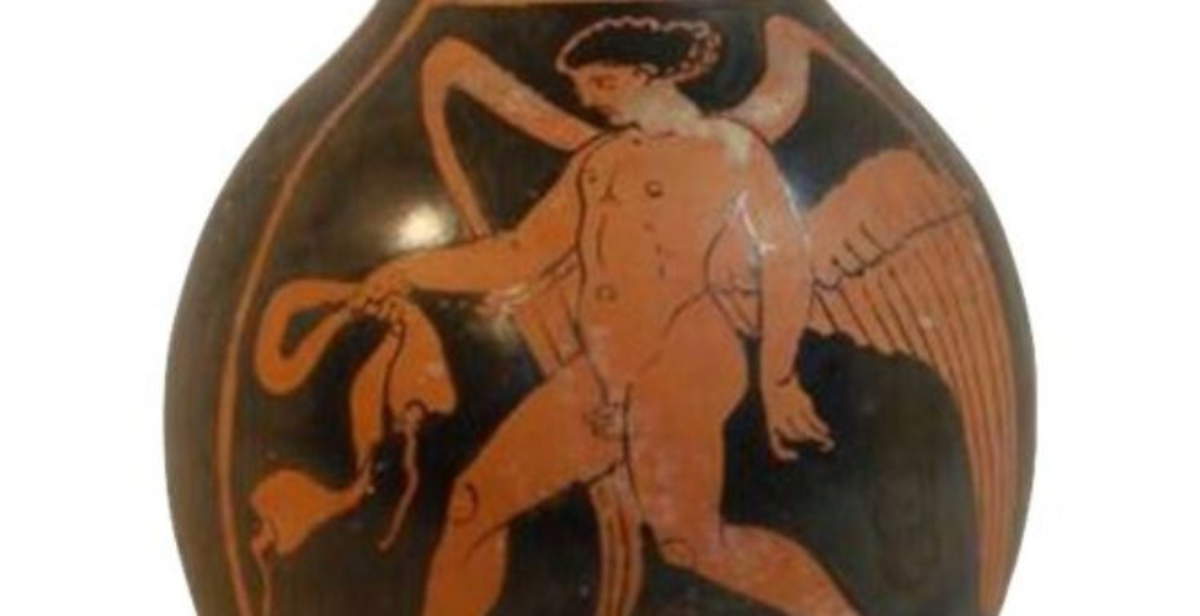On Nov. 18, 2025, the Carabinieri Unit for the Protection of Cultural Heritage in Venice handed over to the Royal Museums of Turin and the Soprintendenza Archeologia, Belle Arti e Paesaggio for the metropolitan city of Venice twelve archaeological artifacts recovered during an investigation launched in August 2024. The goods, all of significant historical and artistic interest, will be destined for the “Vito Capialbi” National Archaeological Museum in Vibo Valentia, which was identified by the Ministerial Table for the allocation of finds returned to the national territory.
Prominent among the returned objects is a red-figure Apulian ceramic mask crater with white and yellow overpainting, dated to the fourth century B.C. and 150 centimeters high. Considered one of the largest specimens known so far, the vase has on its main side a complex iconographic articulation arranged in three registers. The upper register depicts an assembly of deities, in which Ares, Athena, Aphrodite and Eros are recognizable, with Zeus seated in the center on a throne. The middle band depicts two running chariots each drawn by four horses. On the first chariot appear two female figures interpreted as Demeter and Persephone, while on the second is an armed male figure, most likely Hades, in pursuit attitude toward the two women. The lower register depicts male and female figures flanked by fantastic animals, among which a dragon ridden by a young woman emerges. The opposite side of the crater shows a small Ionic-style temple(naiskos) framing a funeral offering scene. The decoration continues on the neck and foot of the vase with elaborate motifs that confirm the quality of the workmanship.
Next to the krater, the group of finds includes a’red-figure hydria, a black-figure wine cup(kylix), a red-figure pitcher(oinochoe), a black-figure vase(lekythos) for perfumes and oils, a clay head, a tanagrin figurine, two vessels for oily liquids(askoi), one in human-shaped terracotta and one in bronze, a small bronze kore, a bone mirror with embossed decoration, and a light green glass balsam bowl. The objects, part of the history of whose provenance has been reconstructed, are most likely believed to be the result of clandestine excavations that took place in funerary contexts, presumably princely ones at least as far as the krater is concerned.



The investigation that led to their recovery originated as part of an inspection activity carried out by the ABAP Superintendency for the metropolitan city of Venice in a listed building in the Venetian capital. During the inspections, carried out in 2024, the collaboration between technicians from the Superintendency and military personnel from the TPC Unit brought to light elements that prompted the Venice Public Prosecutor’s Office to initiate specific investigations. Subsequent searches, carried out in December 2024 in Venice and Turin, in a private home and at a company in the sector, made it possible to identify the artifacts and seize them with the operational support of the territorially competent TPC Nucleus.
The in-depth investigations carried out revealed how the goods had reached the hands of the most recent holders after undocumented intermediate steps, following the receiving of the goods by persons who remained unknown. The absence of suitable titles to justify the private ownership of the artifacts was also noted. In this context, current legislation establishes a presumption of belonging to the cultural domain for archaeological goods that certainly or presumably come from Italian territory. In order to claim ownership of such finds, a private individual must prove that they were awarded by the state as a prize for fortuitous discoveries, that they were ceded by the state as compensation for the occupation of real estate, or that they were in private possession at a date prior to the entry into force of Law 364 of June 20, 1909. The Cultural Heritage Code also establishes the nullity of disposals and legal acts performed in violation of the provisions on the protection and circulation of archaeological property.


In the course of the investigation, the Carabinieri TPC worked with the technical support of the ABAP Superintendency for the metropolitan city of Venice, with the collaboration of the ABAP Superintendency for the metropolitan city of Turin and the Royal Museums of Turin, and with the assistance of the State District Attorney’s Office of Venice. At the end of the investigation process, in March 2025, the Venice Public Prosecutor’s Office ordered the release and return of the artifacts to the state, represented by the Ministry of Culture, pending final allocation. The Venice TPC Unit continues to focus a significant part of its investigative activities on the recovery of artifacts that are part of the cultural property, through constant monitoring of sector trades and thanks to the collection of reports from scholars and enthusiasts. Collaboration with the Ministry of Culture offices and the Superintendencies of Bolzano and Trento helps to identify at-risk contexts and facilitate the return of objects that testify to the history of territories and communities. According to the Ministry, the recovered artifacts will be enhanced at the National Archaeological Museum in Vibo Valentia.
 |
| Archaeological finds recovered: 12 works return to the state and will be exhibited in Vibo Valentia |
Warning: the translation into English of the original Italian article was created using automatic tools. We undertake to review all articles, but we do not guarantee the total absence of inaccuracies in the translation due to the program. You can find the original by clicking on the ITA button. If you find any mistake,please contact us.